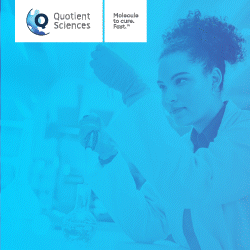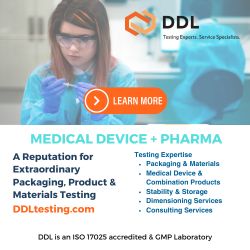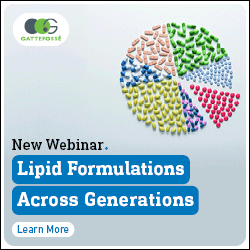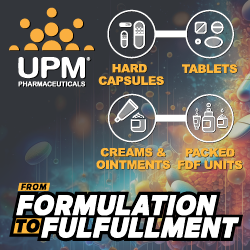Issue:January/February 2025
SPECIAL FEATURE - Analytical Testing – Diverse Demands & Therapies Require Diverse Analyses
The global market for pharmaceutical analytical testing outsourcing was estimated at $10.3 billion in 2023 and is projected to reach $16.3 billion by 2030.1 Rising complexity of drug molecules, particularly in the biologics and biosimilars sector, and a growing demand for personalized and specialized medicines, require more sophisticated analytical testing methods to ensure safety, purity, and efficacy, which often necessitate the use of highly specialized equipment and expertise. Additionally, rapid advancements in digital technologies and data analytics have made outsourcing an attractive option for pharmaceutical companies. Contract Research Organizations that offer advanced data analytics capabilities can provide deeper insights into testing results, accelerating decision-making and improving the overall efficiency of drug development.
As is occurring in many industries, Artificial Intelligence (AI) is disrupting pharmaceutical analytical testing. The combination of AI and automation will drive substantial progress, making pharmaceutical analytical testing more cost-effective. As a tool for predictive analytics in pharmaceutical development, AI accelerates market entry of new pharmaceuticals and improves accuracy in intricate testing situations.2
This exclusive, annual Drug Development & Delivery report highlights how analytical testing has evolved to address diverse pharmaceutical therapeutics in research and development.
Aliri Bioanalysis: Validation Studies Save Time & Money
The biopharma industry has seen a significant increase in demand for the analysis of oligonucleotide therapeutics given their potential to change the standard of care for a wide range of diseases. This has led to the critical application and optimization of available analytical approaches, including LC/MS/MS, hybridization LC/FD, LC/HRMS, and hybridization ELISA assays. Aliri has more than 30 years of expertise weighing the advantages and limitations of these methods, and looks for ways to innovate and improve assay sensitivity and specificity to deliver accurate and reliable data for its sponsors, says Troy Voelker, PhD, Senior Director of Laboratory Operations at Aliri Bioanalysis.

Aliri is known for taking on some of the most challenging projects and rescuing studies when other labs may fail. “We are quite used to developing and validating custom assays for sponsors, usually in a matter of days, to keep their development projects on track,” says Shane Karnik, Senior Laboratory Director at Aliri Bioanalysis. “Our team acts as a collaborative partner using our experience to provide expert guidance and suggest analytical methods that yield better data.”
Aliri’s customers are prioritizing fast timelines and off-the-shelf, affordable solutions, as opposed to highly customized analytical methods, which can be quite costly and take time to develop. As a result, Aliri offers hundreds of non-proprietary, validated assays and biomarker panels that keep costs low and get meaningful data in customers’ hands quickly.
Jim Wilfahrt, Chief Operations Officer at Aliri Bioscience, says the company tackles complex studies across all modalities and seeks to find innovative solutions to meet challenging molecules and timelines. “We’ve also rescued many programs that hit a wall at other labs,” he says. “One customer told us that when three other labs failed, Aliri was their last hope. We not only found a solution that worked so their program could proceed, but in the process, saved that biotech company from certain collapse.”
Time savings is the reason Aliri Bioanalysis has integrated Artificial Intelligence (AI) with spatial-omics data, resulting in earlier prediction of the efficacy of targeted therapies – thereby enhancing customers’ candidate selection processes and de-risking development programs. At a recent conference, Aliri presented an in-depth analysis of complex biological datasets demonstrating how spatial-omics capabilities are an enabler for predictive science.
“Aliri’s data scientists are leveraging custom AI scripts to help our sponsors identify and better understand the drug mechanism of action at the single-cell level with far greater certainty than traditional methods,” says Corinne Ramos, PhD, R&D Director, Aliri Bioanalysis. “The power of AI in conjunction with genomic, proteomic, and metabolomic analysis is a game-changer that provides our clients an edge when selecting drug candidates that are most likely to succeed in the clinic – while saving them time, money, and from costly mistakes in the process.”
Almac Sciences: Analytics to Advance Human Health
Almac continues to significantly enhance its analytical services through several key initiatives positioning the company as a versatile and reliable partner, capable of meeting evolving client needs. Investing almost $14 million to expand analytical services globally, lab footprint and capabilities have considerably increased throughout their facilities in Europe and the US. Inside the lab, investments include specialized equipment, such as a Raman TRS100 system for faster analysis, a multi-million-dollar upgrade to the Laboratory Information Management System (LIMS) to enhance information sharing and optimize operations, as well as other physical sciences tools to support new offerings, like spray drying for poorly soluble drugs.
“This all enables Almac to offer a full suite of analytical testing for various product types, ensuring the ability to handle diverse challenges across all phases of drug development,” says Darren Thomas, Vice President Analytical Operations, Almac Sciences.
Almac has also focused on industry collaborations to advance its analytical testing capabilities. “These partnerships have enhanced our services, integrated innovative technologies, and adapted to evolving industry needs, leading to more efficient and sustainable research and quality control processes,” he says. “Our collaborative approach has proven to be instrumental in achieving remarkable outcomes in analytical testing. We remain dedicated to fostering these partnerships, driving innovation, and delivering exceptional value to our clients and the wider industry.”
In addition to fostering collaboration, Almac is exploring several initiatives where Artificial Intelligence could deliver benefit to its testing services. Some examples are standard operating process creation/update; instrument and people scheduling; instrument utilization; quote generation; regulatory changes and impact; human error trending; and report review/data checking.
“Our investment in robotics revolutionized the dissolution space by providing unmatched throughput capabilities and 24/7 operation,” says Mr. Thomas. “The robot’s compact footprint and superior quality control, including visual assessments and high repeatability, ensure minimal variance and high results. This leads to increased productivity and enhanced service quality for our clients.”
Providing quality services to clients is exemplified in a drug substance and drug product stability program. He explains that the stability study involved thorough analytical testing and preparation methods to ensure the stability of both API and the drug product. Key efforts included the validation of analytical methods, preparation of samples, and the establishment of stability conditions over five years. The study also incorporated transport and in-use stability trials to simulate real-world conditions.
“The project emphasized efficiency by consolidating processes and minimizing setup times, saving significant lab time,” Mr. Thomas says. “The client was satisfied with the comprehensive data, which informed decisions for their Phase III study.”
Inotiv: Expanding Services to Address Diverse Therapies
The emergence of novel biotherapeutics has had a major impact on bioanalytical laboratories and it requires laboratories to offer a wider range of services with more sensitive bioanalytical techniques, which sometimes produce larger sets of data to be analyzed and interpreted.
“Traditionally, most of the drugs were small molecules requiring LC-MS bioanalysis, and for some of the large molecules, basic ELISA and RIA support were sufficient,” explains Kenneth Swart, MMedSc, PhD, Senior Vice President Biotherapeutic Sciences, Inotiv. “With the introduction of large molecule protein drugs such as antibodies, fusion proteins, growth factors and recombinant peptides, traditionally used LC–MS methods were inappropriate to analyze these molecules, although today, much progress has been made in this field. The greater size and complexity of these molecules normally require extensive sample preparation as well.”

Originally, the dominant form of bioconjugates were antibody drug conjugates (ADCs) and used in oncology. Recently, the implementation of bioconjugate therapeutics has been expanded into immunosuppressive, anti-inflammatory, and antimicrobial indications. For an ADC treatment, an antibody targets a specific receptor expressed by cells, and an attached drug (payload) mediates the therapeutic response. Analysis of both the biomolecule and the payload using different techniques are required, explains Dr. Swart.
The analysis of cell and gene therapeutic agents, including oligonucleotides, requires additional bioanalytical technologies such as ELISpot, different forms of hybridization immunoassays (HELISA), qPCR, and flow cytometry platforms. It also requires the analysis of the AAV capsid, and transgene expressed proteins in different tissue samples.
A challenge in drug development is how to measure the ability of a target system to respond to a drug treatment because it would require direct quantitative analysis of cells and tissues including FFPE treated cells. The ability of a target system to respond to a drug depends on:
- The abundance of the target;
- The abundance of other key system proteins; and
- Other proteins that control the tissue phenotype.
Dr. Swart says: “These are very difficult to measure quantitatively due to the complexity and condition of different matrices and tissue samples. Since immunohistochemistry is not quantitative enough, alternative techniques are required such as high resolution mass spectrometry. This has required bioanalytical scientists to attain a much higher level of expertise in the field of immunochemistry, mass spectrometry, immunology, and molecular biology.”
Therefore, depending on the structure of the molecule, stability of the compound, matrix interferences, and other complexities, techniques such as LC-MS, LC-high resolution MS, hybrid LC/MS, flow cytometry, and more sensitive ligand binding assays, are required. Drug development also requires the implementation of comprehensive bioanalytical solutions spanning from discovery to full GLP/GCLP analysis of small molecules, monoclonal antibodies, and novel biotherapeutics. This includes method development to full validation for PK, immunogenicity, receptor occupancy, biodistribution in different tissues, and a full biomarker analysis solution. “Inotiv has expanded and refined our services to meet these diverse and evolving demands of drug development,” he says.
Eurofins Biopharma Product Testing: Developing Pipelines for Cell, Gene & mRNA Therapies
Cell, gene, and mRNA therapies have gained significant momentum. In response, laboratories must expand their testing portfolio to include bioassays, which may require expertise in cell culture, ELISA, PCR, and flow cytometry.
While long-standing technologies such as HPLC and mass spectrometry are utilized in a gene therapy workflow, the variety of genome delivery systems requires an increasingly diverse and complex array of instrumentation and expertise to fit into that workflow. Incorporating new technologies that achieve identical results with reduced sample volume and concentration is a critical initiative to broaden the scope of cell and gene solutions.

“One analytical technique that has delivered on this is mass photometry, which allows for quantitation of empty, full, and partially filled AAV capsids and produces similar results to analytical ultracentrifugation (AUC),” says Jeremy Johnston, Scientific Advisor, Drug Product Operations, Eurofins BioPharma Product Testing. “The advantages of this assay are speed (2 minute vs. 24+ hour analysis time) and sample volume (10μL vs. 0.5 – 1mL) needed for analysis.”
He adds that in potency development, Eurofins BioPharma Product Testing utilizes a stepwise approach to viral vector potency assay development to effectively demonstrate in vivo activity. “We work with clients in the early phases to develop assays to show expression of protein transgene product by capillary western blot or ELISA,” he explains.
For Mechanism of Action (MOA) determination, other instrumentation such as Flow Cytometry or Meso Scale Detection are often implemented. Over the course of product development, the potency testing strategy can be refined, leading to partition between methods intended for lot release vs. characterization based on both scientific and practical considerations.
“We align with others in the cell and gene therapy field to ensure we are well positioned to create partnerships that enable change and accelerate development of life-saving modalities to the market quickly, while ensuring accurate quality standards,” says Mr. Johnston.
As an example, during the COVID-19 pandemic, Eurofins BioPharma Product Testing tested several COVID-19 therapies that clients developed and received regulatory approval. “In addition to our 24/7 rapid-response sample management and testing services, vast capabilities, and quality systems, these projects used our secure online real-time data access portal LabAccess® Web Services to directly integrate data into our clients’ LIMS to ensure expedited and seamless product release to the market,” he says. “By having redundant technology for LNP analysis and characterization, we were able to meet timelines and ensure quality while working across multiple departments to bring life-saving vaccines and treatments to patients.”
Lifecore Biomedical: Expertise in Complex & Highly Viscous Formulations
Lifecore Biomedical continually expands its analytical offerings to meet customer demand for faster testing turnaround with a more diverse range of analyses. In recent years, the company built a new laboratory to accommodate sub-visible particulates testing. The new laboratory was designed with heightened environmental controls to ensure accurate results for parenteral products, especially in the area of ophthalmics, which has extremely strict particulate requirements. “We implemented instrumentation for both light obscuration and microscopic methodologies to support customers with different sample types and testing needs,” says Kevin Vickerman, PhD, Senior Scientist at Lifecore Biomedical.

With expertise in complex and highly viscous formulations, test methods for new products require creative problem-solving. Dr. Vickerman explains a recent customer approached Lifecore Biomedical to improve their viscosity testing of a viscous drug product. The customer was not seeing any correlation between release and stability results, or results between manufacturing lots.
“To troubleshoot the variability of this method, we performed a shear-sweep experiment demonstrating the material was shear-thinning with no Newtonian regions suitable for simple apparent viscosity testing,” he says. “Given this, we proceeded to characterize the viscoelastic properties of the material using an oscillatory method on a rheometer, allowing us to measure the phase shift between stress and strain, and the complex modulus of the material. From there we evaluated the yield stress with steady stress sweeps and dynamic stress/strain sweeps. Ultimately, we developed a dynamic stress sweep method to determine the yield stress (onset point) of the material. We then established a specification for yield stress of the material and successfully validated the test method to support the customer’s registration campaign.”
Overall, Dr. Vickerman says the improved method is easier to execute, highly repeatable (allowing for meaningful batch comparison and trending), and ultimately allowed the customer to quantify subtle material differences across the fill of a production lot that were not apparent from assessment of other CQAs (i.e. assay).
MilliporeSigma: Meeting the Diverse Needs of Viral Vectors
Critical for the robust development and production for viral vectors, analytical testing is an essential component of the majority of cell and gene therapies in development today. Each of these complex therapeutics rely on a distinct and comprehensive analytical program to measure critical quality attributes (CQAs), as well as drive process optimization, yields, and product quality. A challenge with viral vectors, as compared to recombinant proteins and other complex biologics, is the inherent high degree of complexity needed for characterization and QC testing due to their varying protein assembly and architecture. This requires the development and validation of specific analytical methods for different vector types, as well as product-specific assays for potency and product-related impurities, in addition to process-related impurities.
To meet the diverse viral vector characterization and process and product testing needs, MilliporeSigma recently completed an expansion of its analytical development and QC labs at its Carlsbad, CA facility. “In addition to increasing our on-site footprint, we added advanced instrumentation to provide more well-rounded support for a range of viral vectors and incorporated new technologies to allow us to develop methods to support the characterization and testing of our clients’ cell and gene therapy programs,” explains Michael Shen, PhD, Head of Process & Analytical Development, Viral Vector CDMO, MilliporeSigma. “Augmenting traditional analytical instruments with next-generation technologies such as short and long read next-generation sequencers allow us to characterize AAV therapies at multiple points during the development and manufacturing process, allowing our scientists to identify a gene of interest (GOI), verify its length, and pinpoint any mutations that might have occurred, which may impact potency or produce off-target effects.” Other highly specialized instruments, like mass spectrometers, can help identify post-translational modifications that may affect long-term stability or its infectivity, which may be detrimental to product stability and potency.

Additionally, incorporating a data-driven approach during the development process helps prioritize those critical analytics that help drive product and process-related insights and inform real-time decision making, especially as the program scales, he says. Automated analytical methods, which enable high-throughput testing, help deliver this data, thereby accelerating development timelines. He says: “We use high-throughput sampling and automated instruments to achieve more thorough characterization, as well as automated workflows to extract DNA, and plate or prep various dilutions with our robotic workstations for nano-digital PCR tests for host cell DNA.”
He adds that MilliporeSigma’s analytical development team works closely with the process development team to provide high-throughput analytical support process design. “We recently had a client looking to optimize their process to achieve more product during production,” Dr. Shen says. “Concurrent to the process optimization studies, custom assays to confirm titer and potency needed to be developed. The analytical development team supported the testing needed by the process development team during the execution of small-scale screening studies to determine optimal results. They were able to customize an off-the-shelf assay to meet the testing needs of the client’s product. This allowed the client to accelerate their development timeline by 2.5 months and initiate the manufacturing program for their clinical trial.”
Stevanato Group: Optimizing Product Design & Manufacturing
Cell and gene therapies and mRNA drug products are often particularly sensitive to product loss – with some therapies costing millions of dollars, mitigations against losing product are paramount. For example, the risk of losing contents from a dropped container must be minimized. Mechanical testing – such as drop or burst tests – on a variety of container options after the thermal stress of storage can identify the most robust solution. Helium leak and laser headspace gas analysis can also check container closure integrity at extremely low storage temperatures. If the API adheres to the inner surface of a container, the total deliverable volume or drug concentration may be lower than acceptable. For proteinaceous drug compounds, this can be worsened by inner surface variations. Differential interference contrast microscopy, scanning electron microscopy, and optical profilometry can help compare different container providers both initially and over the product’s anticipated shelf life.
Stevanato Group’s initial offering in 2014 studied how drug interacted with a glass container, i.e. glass delamination. Since then, its services have expanded to cover a range of mechanical, systemic, and chemical testing, including syringe, cartridge, and delivery device performance testing, as well as material identification and quantification – all of which can be used to better understand and optimize product design and manufacturing processes. With the opening of a US Technology Excellence Center (TEC) in Boston in 2020, the company began studying the impact of fill and finish activities, which can improve downstream product testing and the qualification of high-speed inspection and assembly equipment.

“Today, we are implementing new capabilities to characterize drug quality over time – to see how the drug itself degrades in the presence of the container,” says Alan Xu, Product Manager for Analytical Services, Stevanato Group. “Techniques like fluorescence, light scattering, and UV-Vis spectroscopy will help us study proteins, viral vectors, and nanoparticles in addition to the overall container and device performance.”
Both the US TEC and EMEA TEC focus on centralized testing and minimize the number of destroyed samples as Xu says Stevanato Group’s offerings can be designed to use the same samples for multiple tests that do not interfere with each other’s performance. Finding the right product – or eliminating the wrong ones – earlier is also speeding up the decision-making process and reducing wasted commercialization effort.
Stevanato Group has a partnership with Roche, resulting in Stevanato Group’s Vision Robot Unit (VRU) inspection technology being installed on Roche’s manufacturing line to complement its own checking equipment. The higher performance of the VRU means fewer samples need to be tested – and results are available within minutes instead of days, states Xu.
Time was also critical for a client that came to Stevanato Group with a mAb in development for the treatment of an immunological disorder. It was crucial to find a containment and delivery system that would ensure the quality, safety, efficacy, and stability of the drug.
“At the earliest stages, we combined analytical testing – such as delamination and protein adsorption studies – to screen multiple container candidates to find the right solution as soon as possible,” he says. “Our collaboration has saved them up to two years of development time, including time that would have been lost since they had originally selected a suboptimal container.”
References
- Pharmaceutical Analytical Testing Outsourcing Global Business Analysis Report 2024-2030: Emerging Use for Preclinical and Clinical Trials Fuels Growth in Early-Stage Drug Development, ResearchandMarkets, Dec. 4, 2024,https://www.businesswire.com/news/home/ 20241204243334/en/Pharmaceutical-Analytical-Testing-Outsourcing-Global-Business-Analysis-Report-2024-2030-Emerging-Use-for-Preclinical-and-Clinical-Trials-Fuels-Growth-in-Early-Stage-Drug-Development—ResearchAndMarkets.com.
- AI and automation to drive “substantial progress” in pharmaceutical analytical testing, Nov. 25, 2024, https://www.europeanpharmaceuticalreview.com/news/238259/ai-and-automation-to-drive-substantial-progress-in-pharmaceutical-analytical-testing/.
Total Page Views: 6393












